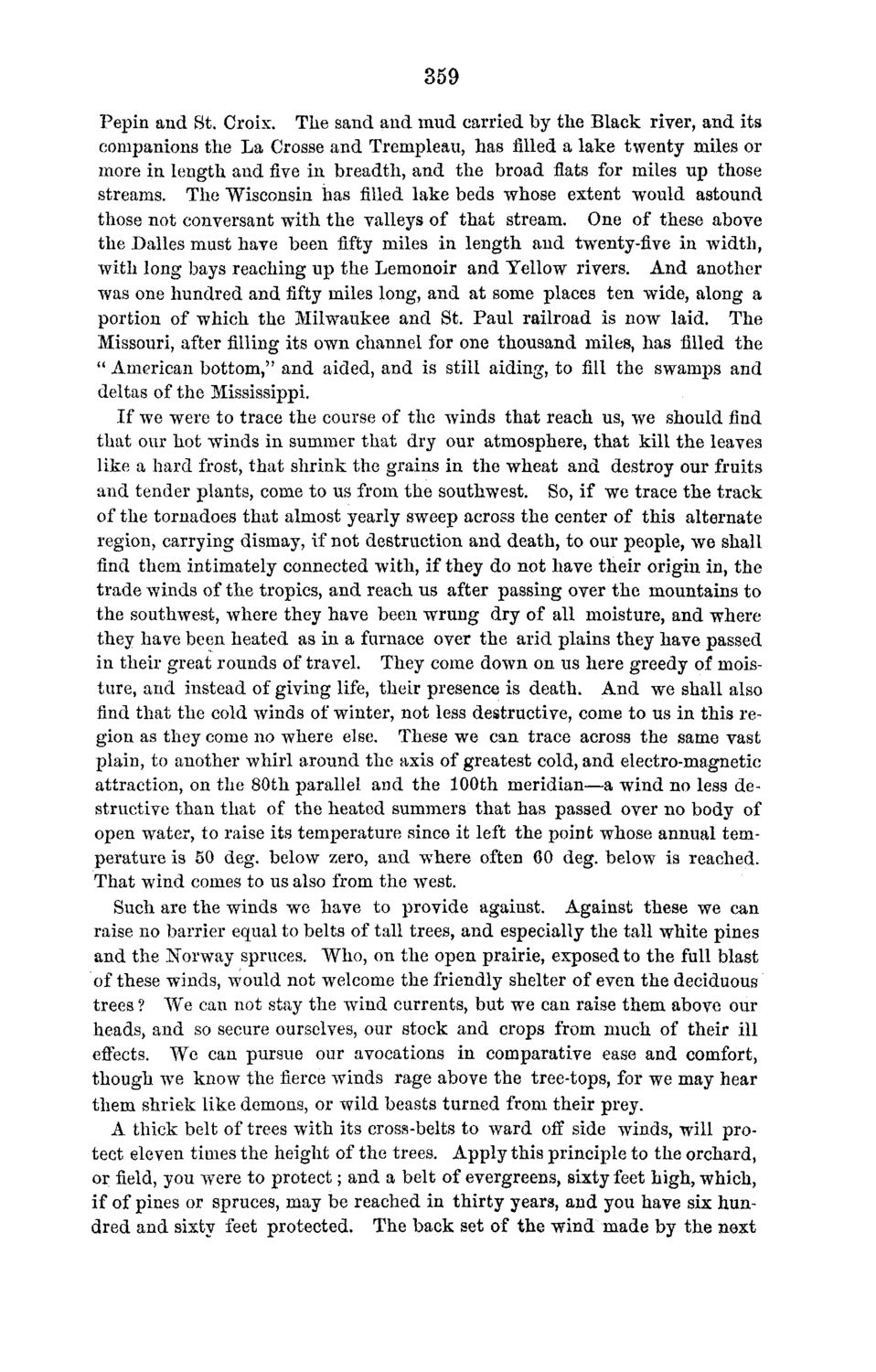| |
| |
Caption: Board of Trustees Minutes - 1870
This is a reduced-resolution page image for fast online browsing.

EXTRACTED TEXT FROM PAGE:
359 Pepin and St. Croix. The sand and mud carried by the Black river, and its companions the La Crosse and Trempleau, has filled a lake twenty miles or more in length and five in breadth, and the broad flats for miles up those streams. The Wisconsin has filled lake beds whose extent would astound those not conversant with the valleys of that stream. One of these above the Dalles must have been fifty miles in length and twenty-five in width, with long bays reaching up the Lemonoir and Yellow rivers. And another was one hundred and fifty miles long, and at some places ten wide, along a portion of which the Milwaukee and St. Paul railroad is now laid. The Missouri, after filling its own channel for one thousand miles, has filled the "American bottom," and aided, and is still aiding, to fill the swamps and deltas of the Mississippi. If we were to trace the course of the winds that reach us, we should find that our hot winds in summer that dry our atmosphere, that kill the leaves like a hard frost, that shrink the grains in the wheat and destroy our fruits and tender plants, come to us from the southwest. So, if we trace the track of the tornadoes that almost yearly sweep across the center of this alternate region, carrying dismay, if not destruction and death, to our people, we shall find them intimately connected with, if they do not have their origin in, the trade winds of the tropics, and reach us after passing over the mountains to the southwest, where they have been wrung dry of all moisture, and where they have been heated as in a furnace over the arid plains they have passed in their great rounds of travel. They come down on us here greedy of moisture, and instead of giving life, their presence is death. And we shall also find that the cold winds of winter, not less destructive, come to us in this region as they come no where else. These we can trace across the same vast plain, to another whirl around the axis of greatest cold, and electro-magnetic attraction, on the 80th parallel and the 100th meridian—a wind no less destructive than that of the heated summers that has passed over no body of open water, to raise its temperature since it left the point whose annual temperature is 50 deg. below zero, and where often 60 deg. below is reached. That wind comes to us also from the west. Such are the winds we have to provide against. Against these we can raise no barrier equal to belts of tall trees, and especially the tall white pines and the Norway spruces. Who, on the open prairie, exposed to the full blast of these winds, would not welcome the friendly shelter of even the deciduous trees ? We can not stay the wind currents, but we can raise them above our heads, and so secure ourselves, our stock and crops from much of their ill effects. We can pursue our avocations in comparative ease and comfort, though wTe know the fierce winds rage above the tree-tops, for we may hear them shriek like demons, or wild beasts turned from their prey. A thick belt of trees with its cross-belts to ward off side winds, will protect eleven times the height of the trees. Apply this principle to the orchard, or field, you were to protect; and a belt of evergreens, sixty feet high, which, if of pines or spruces, may be reached in thirty years, and you have six hundred and sixty feet protected. The back set of the wind made by the next
| |